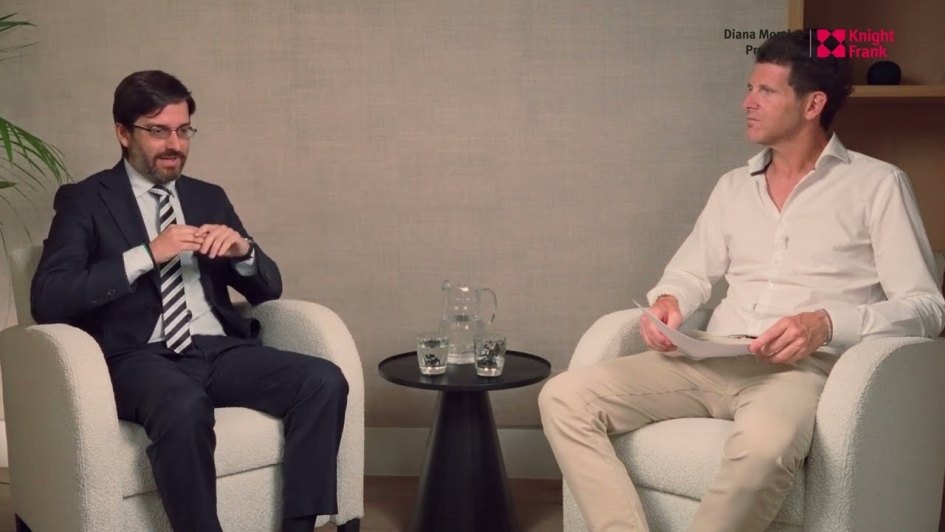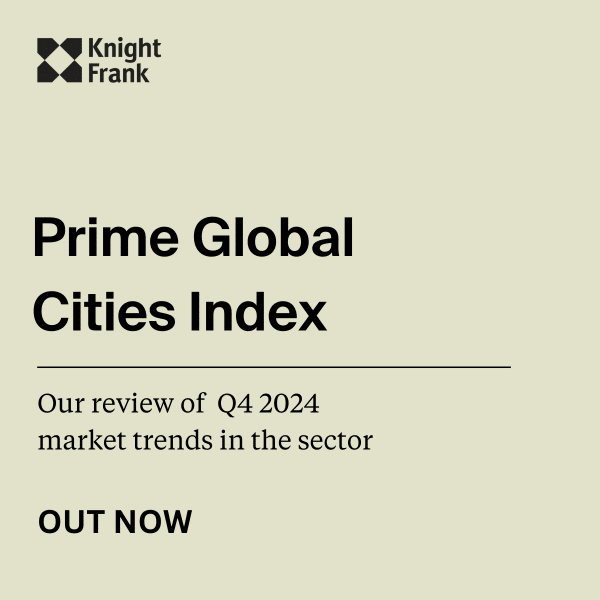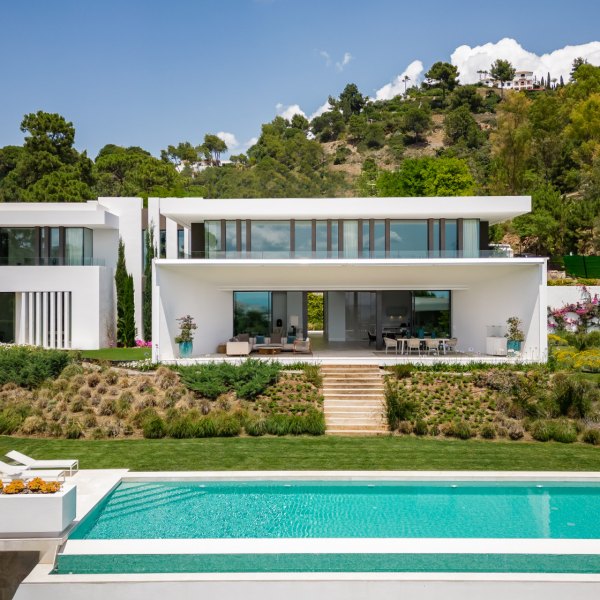Interview with Javier Pérez de Vargas: The Evolution and Future of Urban Planning in Marbella

In this interview, we talk about the urban planning situation in Marbella with Javier Perez de Vargas, a lawyer and member of one of the most prestigious law firms on the Costa del Sol. We talk not only about the past and present of urban development in the city but also about its future prospects. Throughout the conversation, Javier takes us through key moments in urban planning, from the controversial 1986 Plan to the most recent proposals for a new general plan, adapted to current urban planning requirements. We examine past mistakes and the challenges the city faces to ensure orderly, sustainable growth aligned with the expectations of a modern and resilient city like Marbella.

Mariano Beristain (DM): Today is a special day for our firm as we are interviewing Javier Pérez de Vargas, partner and member of one of the most important and reputable law firms in Marbella. Based in Estepona and Marbella, the Pérez Vargas firm is a pioneer in providing comprehensive legal advice in the real estate field and has over 50 years of experience in the sector. They specialize mainly in urban planning, civil, procedural, commercial, and banking law in real estate.
Javier Perez de Vargas (JPV): Thank you very much, Mariano, first of all for the invitation; it is a pleasure to be here at Diana Morales Properties.
DM: Today we are going to talk about the urban planning situation in Marbella, not just the past and present, but also the future. To start, could you give us a brief overview of the evolution of urban planning in Marbella from its beginnings to the present day?
JPV: I believe we must start with the 1986 plan, which is the plan currently in force. This is already quite surprising, as it is clear that with all the changes in society at an economic, cultural, and municipal level, the 1986 plan is no longer adequate. Marbella has developed to a great extent outside the framework of this outdated plan.
The 1998 plan is another critical point in the history of urban planning in Marbella, as it laid the foundation for some of the problems we face today. To summarize, the plan was partially approved but later suspended, leading to a thousand licenses being granted in accordance with it despite never being formally approved by the Junta de Andalucía. This, in turn, resulted in 18,000 irregular dwellings that have been a source of numerous issues over the years. Then we come to the 2010 plan, drafted after the dissolution of the local corporation in 2006. A new plan was commissioned to address the situation, but it too faced setbacks. In 2015, on October 27, the Supreme Court annulled this plan with two rulings.
DM: Javier, why are so many urban plans being annulled in Marbella? What causes these actions?
JPV: It is crucial to understand why the 2010 plan was annulled so we can avoid repeating the same mistakes. As the saying goes, “Those who don’t know their history are doomed to repeat it.” In short, the 2010 plan focused too heavily on irregular housing, attempting to address past issues rather than designing a future city model. The Supreme Court found that the obligations imposed on developers lacked proper justification, given they were no longer the legal owners. The Court also criticized the plan for basing many of its provisions on compensating for past irregularities rather than building a vision for the future city.
DM: From a legal perspective, what mistakes were made in drafting the plan? You mentioned focusing too much on the past instead of the future. Are there any other legal aspects worth highlighting?
JPV: Several municipalities have faced similar issues, with over 100 general plans annulled in recent years. It is essential to adhere to environmental regulations, as these are critical today. Urban plans must comply with higher-ranking regulations, and this helps prevent future cancellations. Additionally, detailed sectoral reports are necessary.
DM: What impact have these annulments had on the city’s economic and social development?
JPV: Marbella has shown resilience, despite the political and urban planning chaos and the negative headlines that generated social alarm abroad. We’ve seen hesitation from foreign clients seeking advice from law firms specializing in urban planning. The damaged brand image and legal uncertainty have been detrimental, but despite all this, Marbella remains a highly sought-after destination for foreign investors and residents.
DM: Moving on to the present, what is the current situation of urban planning in Marbella?
JPV: The current situation is promising. A new plan is in the process of being developed. In our office, we often say that although the annulment of the 2010 plan was unfortunate in the short term, it turned out to be good news in the long term, as it allows us to design a city model that looks toward the future. The new plan is being developed in accordance with the new Andalusian land law, known as "la lista." This law, which was passed in November 2021 and came into effect in December, divides the general plan into two documents: the General Municipal Development Plan (PGOM) and the POU (Urban Planning Ordinance Plan). The PGOM outlines the fundamental structures and differentiates between rural and urban land. The second revision of the plan is currently in the public consultation period, set to conclude on August 23. The city council, according to the Town Planning Delegate, Eduardo Díaz, expects final approval of the plan by early 2025.
DM: Let me leave the million-dollar question for the end. When do you think we could have a fully approved and operational plan in place?
JPV: That’s indeed the million-dollar question! The POU is the second of the planning documents, which establishes the detailed planning guidelines. It has successfully passed the public consultation phase and is currently going through environmental reviews. Based on the city council’s information, it is expected that the plan will be fully approved, published, and in force by 2026. It’s a highly anticipated plan, and there’s a lot of excitement around it.
DM: We've been waiting for it for years, indeed! The new plan aims to achieve a more balanced, sustainable, and participatory urban development. What significant changes can we expect with this new plan?
JPV: As mentioned, the "lista" introduces many new features, with one of the most significant being the division of the general plan into two documents. The law also simplifies land classifications into urban and rural, with different categories within rural land, such as specially protected areas. One of the primary objectives is to make urban planning more flexible, avoiding rigidity and allowing for projects of general interest. Another important goal is to prevent dramatic consequences if a court annuls part of the plan since each document is independent. This offers better protection to the overall planning structure.
DM: What challenges are expected during the approval process or in executing the new general plan?
JPV: I believe the mistakes of the past are being addressed effectively. One key challenge is ensuring extensive citizen participation and reaching consensus. Another is adapting to environmental regulations, which is vital. And finally, a significant challenge here in Marbella is integrating the 18,000 irregular dwellings into the city’s new model.
DM: Earlier, you mentioned Marbella’s resilience. How do you see this new plan impacting the city ’s future in terms of sustainability, economic and social growth?
JPV: Well, I would go to the report, because I am very optimistic and I take it for granted that the plan will be approved within the timeframe we have been told, that it has a good pace and that it will not have any cracks, so this is the plan that is going to be executed. If we go to the PGOM report, which tells us about the design of the city and which is more advanced, then in section 2.5 of the informative report, the model of the city that is being sought is perfectly defined. And therefore the requirements of the supreme court and what should be the object of the planning are fulfilled, and there it talks about green city or garden city, that is to say, Marbella, in spite of all the problems, has one of the highest standards of public green areas in Spain, if we compare it with other cities. It is a polynuclear city, polynuclear in the sense that there are no longer only two nuclei, San Pedro and Marbella, but other nuclei are recognised within this garden city which has public green areas and also all the private ones. It is also recognised that the single-family homes with their gardens, groves of trees, golf courses, all contribute to the green city, to the garden city. Talking about the plurinuclear city, it recognises the garden city to the west (Guadalmina, Nueva Andalucia) to the east (Elviria, Rosario, Rio Real) as a nucleus of population, all of this is very important because it is linked to the 15 minute city, to sustainability.
DM: Off-camera, I asked if the plan considers the city's demographic growth and addresses traffic issues, which are currently a major challenge.
JPV: Yes, the report explicitly addresses this. One key aspect is improving road infrastructure and promoting sustainable mobility, such as pedestrianization and bike lanes. The focus on enhancing mobility is crucial, especially in a city that relies heavily on residential tourism as its economic base.
DM: From a legal standpoint, what are the main considerations that should be kept in mind in the urban development of a city like Marbella?
JPV: To avoid future legal challenges, it’s crucial to ensure compatibility between urban planning and environmental requirements. Particularly in Marbella, careful consideration must be given to integrating irregular dwellings without imposing excessive burdens or compensation requirements. Many of these homes have been inhabited for decades and were built with legitimate building permits. Legal certainty and good faith are essential, especially for investors and homeowners. Ideally, once the new plan is in place, due diligence should become the exception rather than the rule.
DM: That would be the ideal scenario, Javier. What lessons can be learned from the past to avoid setbacks in the future?
JPV: First, the plan should set a realistic, forward-looking city design. The fundamental mistake was allowing urban development to dictate the city design rather than the other way around. It’s also essential to comply with environmental requirements, strategic environmental assessments, and sectoral reports to prevent legal loopholes.
DM: To conclude, I have one last question on a more personal note: How do you see the future of urban planning in Marbella in the next 10 to 20 years?
JPV: Attempts to normalize urban planning in Marbella have faced setbacks in the past, but I believe that now we have all the right elements in place. Urban planning should contribute to Marbella’s sustainable growth, supported by experienced professionals and exceptional resources such as educational and healthcare facilities. I’m confident that Marbella is on the right path to achieve the city model we’ve been striving for.
DM: It is encouraging to hear that. Thank you very much, Javier, for your insights. It has been a pleasure having you here at Diana Morales Properties, and we appreciate the opportunity to discuss such a crucial topic with a member of one of Marbella’s most distinguished law firms. Thank you for your time.
Pia Arrieta, 04 Nov 2024 - News
Related Articles

Prime Global Cities Index Q4 2024
1 min. read · Pia Arrieta

Understanding the Proposed Tax Changes for Non-EU-Resident Property Buyers in Spain
3 min. read · Pia Arrieta

What’s Next for Marbella’s Luxury Homes: Master Architects Share Their Vision for 2025
6 min. read · Pia Arrieta

Luxury real estate’s global cooling, Q3 2024
1 min. read · Pia Arrieta